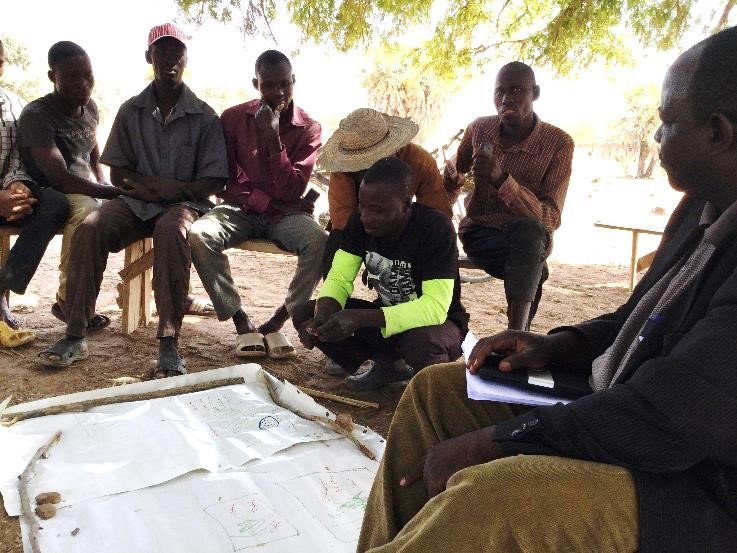
Before and After Drawings Depict Improved Results
Drawing pictures under the shade of a large tree, a community realized how much better off they were after using conservation agriculture practices over the last six years.
Village men and women – including program participants and non-participants – were invited to draw pictures of the way their fields looked in 2011 and 2018. In both years, the rainy season failed, so it was appropriate to compare their results under the same conditions. While people had little to harvest during these two years, they had more in 2018. And they’d had better farming results in the intervening years because of the improvements they’d made in their ag practices.
As people took turns telling about practices they used then and now, they drew small rectangles to represent 2011 and bigger ones for 2018. They said, “Our fields are larger. Over these last several years we’ve been able to recuperate land by planting in holes, shaping the land for water retention, and enriching the soil.”
Rather than engaging in slash-and-burn farming, they now leave organic material in the fields and add manure. They used to cut down trees in their fields; now they leave them there, or plant more, to add organic material to the soil and shade the crops from the baking sun. Before, they only planted millet, sorghum and, occasionally, beans. Now, they use improved seed varieties to diversify their crops and improve their diets, including sesame, corn, rice, and okra.
A testament to the strength of the programming for the good of all is the spontaneous uptake of practices by non-members. The drawings of this group looked exactly the same as those of program participants because, as they explained it, “We have seen what our friends are doing in their fields, so we copy it and we see the difference in our own fields!”
Caption: A farmer contributes before-and-after drawings of his fields
Led by World Renew and Local Partner Showing Everybody Love
